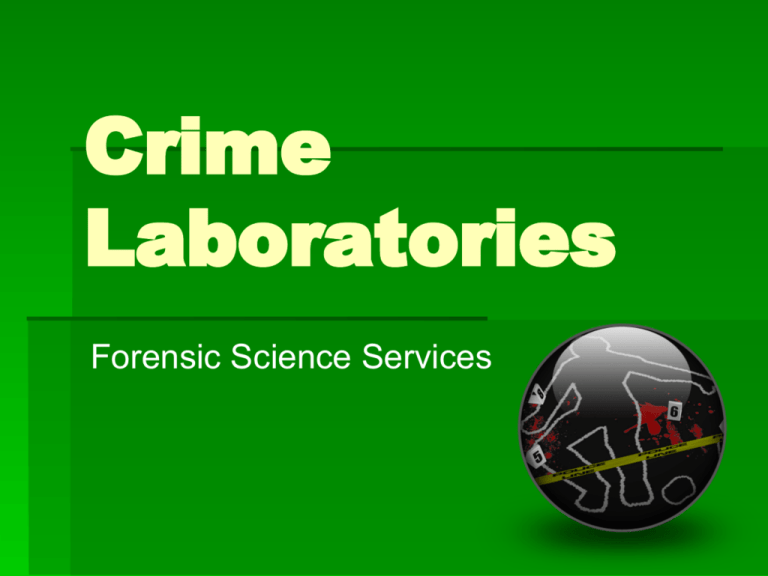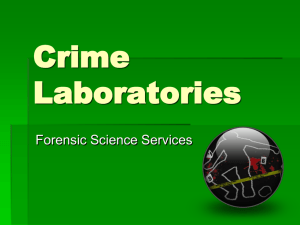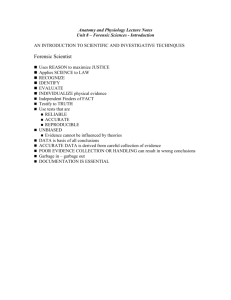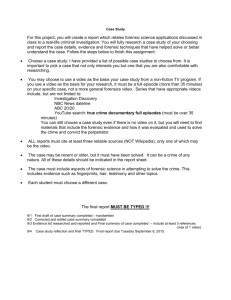Crime Laboratories-2
advertisement

Crime Laboratories Forensic Science Services Crime Labs in the U.S. ▪ Wide Variation in services offered, for reasons including: ▪ Local laws ▪ Functions of the organization to which the lab is attached ▪ Budgetary and staffing limitations Crime Labs in the U.S. ▪ Crime Labs can include: ▪ ▪ ▪ ▪ ▪ ▪ ▪ ▪ ▪ Physical Science Unit Biology Unit Firearms Unit Document Examination Unit Photography Unit Toxicology Unit Latent Fingerprint Unit Voice Analysis Unit Crime Scene Investigation Unit Crime Labs in the U.S. ▪ Other Forensic Science Services: ▪ ▪ ▪ ▪ ▪ ▪ ▪ Forensic Pathology Forensic Anthropology Forensic Entomology Forensic Psychiatry Forensic Odontology Forensic Engineering Forensic Computer and Digital Analysis Physical Science Unit ▪ Applies techniques of chemistry, physics, and geology to crime scene examination ▪ ▪ ▪ ▪ Glass Paint Explosives Soil Biology Unit ▪ DNA profiling ▪ Blood stains and body fluids ▪ Hair and fiber analysis ▪ Compare botanical materials such as wood and plants Firearms Unit ▪ Firearms ▪ ▪ ▪ ▪ Discharged bullets Cartridge cases Shotgun shells Other ammunition ▪ Garments: examined for firearm discharge residues ▪ Tool marks Document Examination Unit ▪ ▪ ▪ ▪ Examining handwriting and typewriting Paper and ink analysis Indented writings, erasures Burned or charred documents Photography Unit ▪ Examines and records physical evidence ▪ This may include digital, infrared, UV, and Xray imaging ▪ Prepares photographic exhibits for courtroom presentation Toxicology Unit ▪ Examines body fluids and organs for presence or absence of drugs and poisons ▪ Often such functions are in a separate lab under the direction of the medical examiner or coroner’s office Fingerprint Unit ▪ Develop latent fingerprints ▪ May take fingerprints of suspects, persons of interest ▪ Analyze fingerprint ridge characteristics Other Services ▪ Polygraph ▪ A tool of the criminal investigator rather than the forensic scientist ▪ Voiceprint Analysis ▪ Telephoned threats, tape-recorded messages, etc. ▪ Not always considered a valid means of identification. Crime-scene Investigation Unit ▪ This is often under the jurisdiction of the law enforcement agency. ▪ This unit dispatches specially trained personnel (police and/or civilian) to the crime scene to collect and preserve physical evidence for later lab analysis. Working Together…











